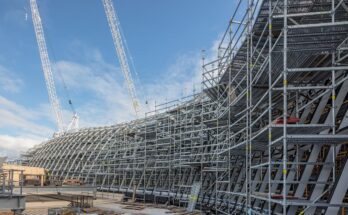The world is at a critical juncture where the need for sustainable practices has become more pressing than ever before. One of the key areas where this shift is occurring is in the construction industry, with the rise of green buildings. Green buildings, also known as sustainable or eco-friendly buildings, are designed and constructed with a focus on minimizing their environmental impact while maximizing resource efficiency and occupant well-being. This article delves into the concept of green buildings, their benefits, key features, and their role in shaping a more sustainable future.
Defining Green Buildings
Green buildings go beyond conventional structures in their design, construction, and operation. They are built to optimize energy efficiency, reduce water consumption, minimize waste generation, and enhance indoor environmental quality. The aim is to create a harmonious balance between the built environment and the natural surroundings, thereby reducing the overall ecological footprint.
Key Features of Green Buildings
- Energy Efficiency: One of the primary focuses of green buildings is energy efficiency. This involves utilizing advanced insulation materials, energy-efficient lighting, smart heating and cooling systems, and renewable energy sources like solar panels or wind turbines. These measures drastically reduce energy consumption, leading to lower utility bills and decreased greenhouse gas emissions.
- Water Management: Green buildings incorporate water-efficient fixtures, rainwater harvesting systems, and even greywater recycling. These features help reduce water wastage and alleviate stress on local water supplies.
- Materials Selection: The choice of construction materials in green buildings is critical. Sustainable materials with a lower environmental impact, such as recycled or rapidly renewable materials, are preferred. This not only reduces the extraction of finite resources but also minimizes the carbon footprint associated with construction.
- Waste Reduction: Green buildings aim to generate as little waste as possible during construction and operation. Strategies include recycling construction waste, promoting reuse, and designing for deconstruction – making it easier to disassemble the building components at the end of its lifecycle.
- Indoor Air Quality: The well-being of occupants is a priority in green buildings. Enhanced indoor air quality is achieved through proper ventilation systems, low-VOC (volatile organic compounds) paints and finishes, and the use of natural materials that don’t emit harmful substances.
- Site Selection and Land Use: Green buildings often take into account the impact of their location on the environment. Choosing sites with access to public transportation, minimizing disruption to ecosystems, and preserving green spaces are all crucial considerations.
Benefits of Green Buildings
- Environmental Benefits: Green buildings contribute to a significant reduction in carbon emissions, energy consumption, and water usage. This has a positive impact on local air and water quality, as well as global climate change mitigation efforts.
- Economic Benefits: While the initial costs of constructing green buildings may be slightly higher, the long-term operational savings, including reduced energy and water bills, often outweigh the initial investment. Additionally, green buildings tend to have higher resale values.
- Health and Well-being: The indoor environmental quality of green buildings creates a healthier and more comfortable living and working environment. Improved air quality and access to natural light have been linked to increased occupant productivity and well-being.
- Community Advancement: Green buildings set an example for sustainable practices and can inspire other projects in the community. They contribute to a sense of environmental responsibility and can lead to the revitalization of neighborhoods.
Conclusion
Green buildings stand as a testament to the potential of sustainable design and construction practices. They showcase that it is possible to create structures that are not only aesthetically pleasing and functional but also environmentally responsible. As we move towards a future where resource scarcity and environmental concerns are becoming more pronounced, the widespread adoption of green building principles is an essential step in creating a more resilient and sustainable world for generations to come.



